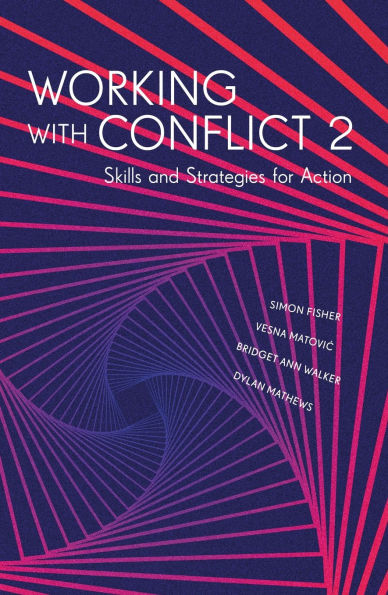Conflict, as distinct from violence, lies at the heart of all social and political change. It is conflict that is often a sign and mechanism for change, it has many positive characteristics, which we can use to address direct, cultural and structural violence. In order to thrive, peaceful societies need to be able to manage a degree of conflict skilfully.
Working with Conflict embodies and reflects the rich diversity of over 300 peace practitioners from some 70 countries. Pooling their varied experiences across a wide variety of themes - poverty, war, the rise of surveillance and extremism, climate change and environmental degradation, gender and conflict, as well as security cooperation and international relations - Working with Conflict is an accessible practical resource, for both individuals and organisations working and researching working in conflict-prone and unstable parts of the world. Easy to use, including helpful visual materials, it provides a range of practical tools - processes, ideas, techniques - for tackling conflict, as well as providing links to other key conflict-related and peace-building resources, including organisations, publications and websites.Conflict, as distinct from violence, lies at the heart of all social and political change. It is conflict that is often a sign and mechanism for change, it has many positive characteristics, which we can use to address direct, cultural and structural violence. In order to thrive, peaceful societies need to be able to manage a degree of conflict skilfully.
Working with Conflict embodies and reflects the rich diversity of over 300 peace practitioners from some 70 countries. Pooling their varied experiences across a wide variety of themes - poverty, war, the rise of surveillance and extremism, climate change and environmental degradation, gender and conflict, as well as security cooperation and international relations - Working with Conflict is an accessible practical resource, for both individuals and organisations working and researching working in conflict-prone and unstable parts of the world. Easy to use, including helpful visual materials, it provides a range of practical tools - processes, ideas, techniques - for tackling conflict, as well as providing links to other key conflict-related and peace-building resources, including organisations, publications and websites.
Working with Conflict: Skills and Strategies for Action
240
Working with Conflict: Skills and Strategies for Action
240Paperback(2nd ed.)

Product Details
| ISBN-13: | 9781913441388 |
|---|---|
| Publisher: | Bloomsbury Academic |
| Publication date: | 10/29/2020 |
| Edition description: | 2nd ed. |
| Pages: | 240 |
| Product dimensions: | 6.14(w) x 9.21(h) x 0.51(d) |
